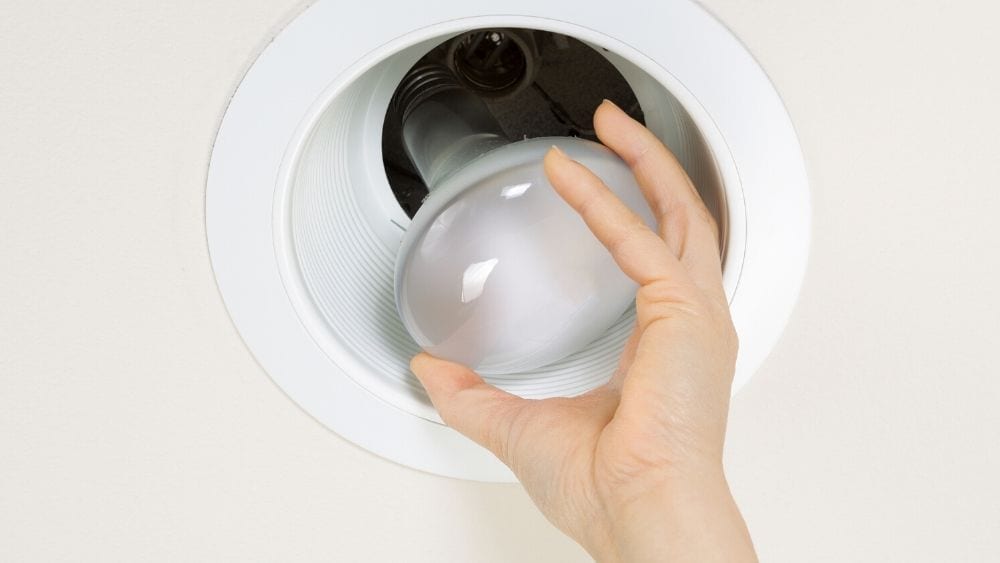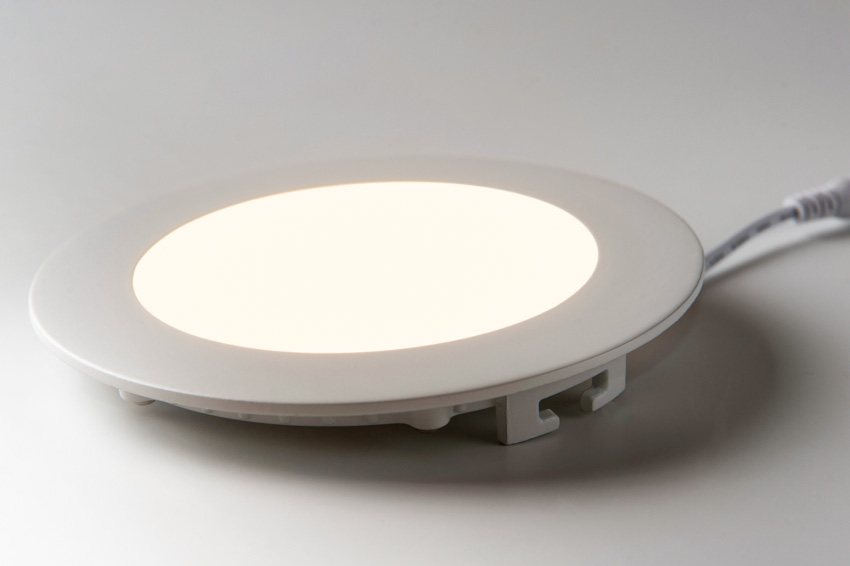Are you considering recessed lighting for your home but feeling overwhelmed with all the options available?
In a nutshell, can recessed lights are more traditional and require a housing unit to be installed in the ceiling, while canless recessed lights are newer and more streamlined, with the LED and trim in a single unit, making them easier and quicker to install, but may have some limitations.
But let’s explore the main differences between these two types of lighting and discuss their advantages and disadvantages.
We’ll also cover important information such as dimensions, lifespan, and whether you need cans for LED recessed lighting.
What is Can Lights?
Can light – is a lighting appliance that is inserted into a ceiling hole. When placed, it gives the impression that light is coming from a hole in the ceiling and is focused downwards as a wide floodlight or a narrower spotlight.

Can light obtained its name due to the embedance which rests inside of the ceiling, which outlook and form reminds of metal can or cylinder.
What are Recessed Lights? Types of recessed lights
Recessed lights – are a form of lighting fixture that is mounted into the ceiling or a wall.

Recessed light has several variations among them:
- Recessed fluorescent lights – they are typical among commercial buildings, garages, large warehouses and medical facilities.
- Downlights – widely used in private apartments. Great for the kitchen, bathroom or hallway. Also can be applied in garages or over workplaces.
- Pot lights – as downlights, pot lights are a great option for illumination.
What does Canless mean for recessed lighting?
A canless recessed light consists of a single device that plugs into the electrical wiring of your house. Canless recessed lighting usually comprises thin discs with built-in LED lights rather than a light bulb. This implies that the entire fixture needs to be replaced if a few LEDs stop working.
Is Can Light Type Of Recessed Lighting?
Yes, it is,can light is one of the types of recessed lighting. Can lights construction directly looks like “can” which fixture is being installed in a ceiling hole.
What is the benefit of canless recessed lighting?
The canless light is much easier to install. This means that you will not need to prepare the ceiling space for its installation. Also, canless light takes up much less space between the ceiling overlap and the stretch or suspended ceiling.
Why do people love recessed lighting?
Recessed lighting offers greater covering area, which is one of its main advantages. It is simpler to evenly illuminate every part of your room because recessed lights are placed across the ceiling. Recessed lighting is typically chosen by homeowners for their kitchens, living rooms, and bathrooms.
Main Differences Between Can And Canless Recessed Lights?
Canned recessed light is characterized by having a body in the form of a can. Such illumination is attached to the ceiling, for example, with brackets or special fittings. Electricity is supplied through the terminal block.Their fastenings are standardized for different luminaires, which simplifies installation.
Canless recessed light does not provide a can housing for fastening in its design. Light of this type uses LED emitters that can be ultra-thin and compact, which allows it to be installed in a ceiling with a small space.
Can recessed light advantages:
- Simple construction of the light
- Wider specter of lamp option
- Can illumination gathers light better
Can recessed light disadvantages:
- You have to plan where to put can light in advance
- Lifespan and brightness relatively is not long
Canless recessed light advantages:
- Compact construction
- Easiness of installation in the ceiling
- Energy efficient thanks to LED technology
- Longer working hours
Canless recessed light disadvantages:
- More complicated replacement because of compactness
- Some components are not so easy to change
Recessed Can Lighting Dimensions
In private houses or apartments, one of the three main basic dimensions of lighting is usually used.
The size that is most often applied when installing recessed can lights is 6 inches. However, there are cases where 5-inch and 4-inch fixtures also can be applied.
Dimensions in inches refer to the diameter of the can body, not the depth.
There are two types of depth: basic and shallow. Both of these apply to 5-inch and 6-inch luminaires. For 4-inch lights, the depth should be much less.
The table below demonstrates dimensions of a standard recessed can light.
| Type of the light | Diameter of the housing | Diameter of the hole | Basic can height | Shallow can height |
| 4-inch | 4 inches | 4 ⅜ inches | 5 ½ inches tall | 3 ½ inches tall |
| 5-inch | 5 inches | 5 ⅝ inches | 7 ½ inches tall | 5 ½ inches tall |
| 6-inch | 6 inches | 6 ⅜ inches | 7 ½ inches tall | 5 ½ inches tall |
Do Canless LED lights get hot?
Yes, canless LED recessed lights get hot. Compared to other types of lights, these don’t create that much heat.
The heat dissipation technology which is carried out through radiators on the canless LED recessed lights keeps them cooled which reduces the amount of the heat they produce resulting in less energy consumed.
However not all the canless LED lights have this cooling feature.
How long do Canless LED lights last?
The lifespan of many canless LED lights is 50,000 hours or more (depending on the manufacturer this figure may be different). If you keep the lights on all day, that turns into about 5 and a half years. If the canless lights are used for an average of 6 hours each day, that converts to 22 years of work.
Do I need cans for LED recessed lighting?
It is possible to install a LED light in the prepared place for canned lighting. But if the lighting was originally with LED, then an ordinary light bulb will not fit there.
Where should you not put recessed lights?
It is advised no to install recessed lights in bedrooms. Bedroom is a place where you want to feel relaxed and calm, with minimum illumination which is not distracting or irritating.
Also strive not to install recessed lights in family or living rooms – better choose floor or table lamps, so your eyes won’t be blinded by the outcoming light. If you want to have recessed light in a spacious room, for better room perception, use a minimum of them in combination with other light fixtures.
Are canned lights out of style?
Recessed lighting was created in the 1940s, however, it wasn’t widely popular until the 1970s. Canned lights popularity dropped a bit in the beginning of 2000s.
Nowadays, with the constant development and improvement of LED lights and smart technologies, canned recessed lighting remains a great and up-to-date option for home design. Thanks to their versatility,canned lights can be placed almost anywhere to enhance the ambiance of any room.
Are canned lights more expensive?
The price of a built-in can light depends on the segment to which it belongs. Budget options will be made from simpler and cheaper materials, while the premium segment uses high quality materials that increase its cost.
